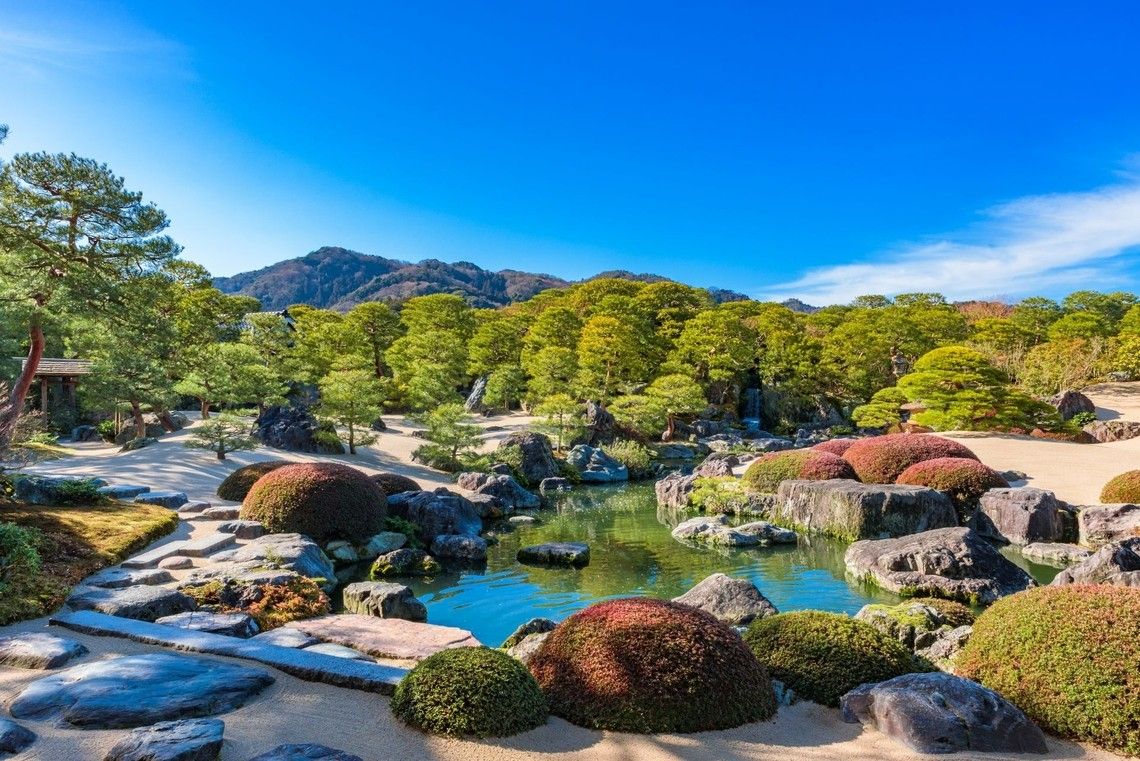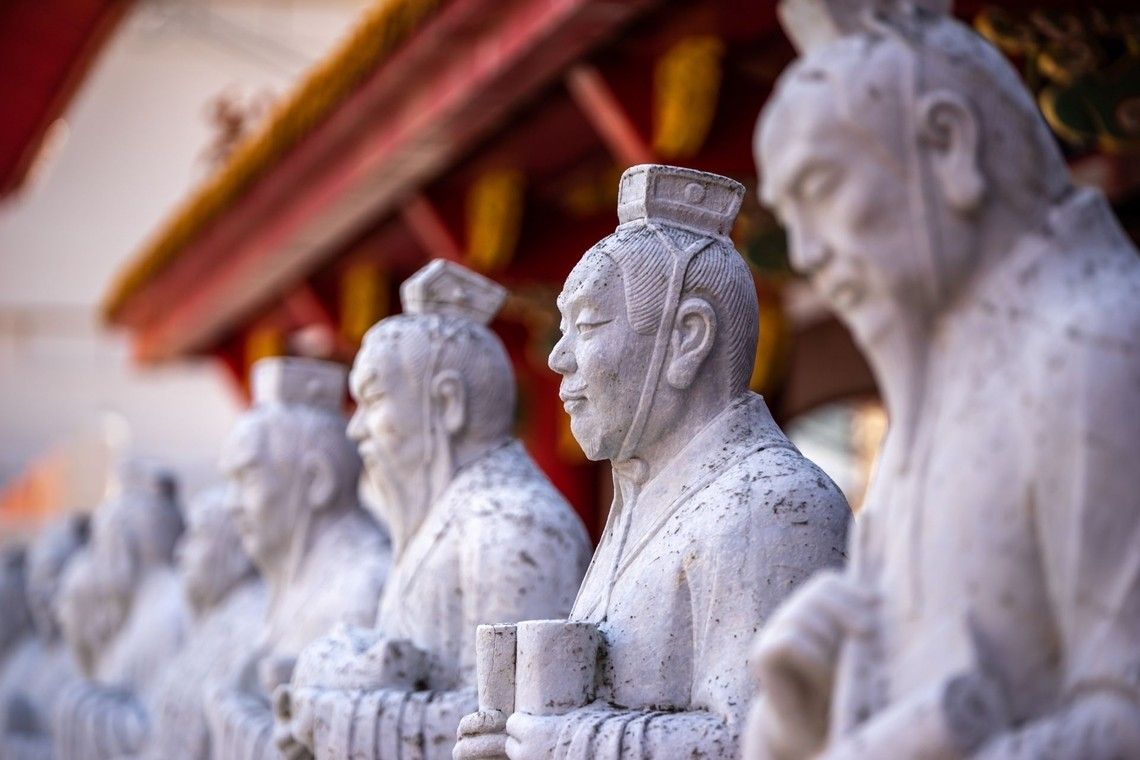Natsukashii (なつかしい) is a Japanese word that describes the small things that recall memories from the past. No word can better describe starting a voyage through traditional Japan in Hiroshima, a bustling modern city, with a firm memory of its sorrowful past in its very heart: the Peace Memorial. After leaving your crane origami floating on water with flower petals, embark with us and venture into a world where the past mixes with the future in every single detail.
East and West of the Strait
Shimonoseki (literally, "west of the strait") welcomes travelers wishing to recall how a small town can become a strategic place in history. From the first large-scale civil war in Japan, the Genpei War in the late 12th century, to the overthrow of the Tokugawa shogunate in the Meiji Restoration (1864), the city always held a strategic position in local power struggles. While you stroll through history, enjoy the view of the strait from the Mojiko Retro Takasaki area and taste fresh sushi and sashimi at the Karato Market. Should you be a daring one, the last one offers authentic fugu (pufferfish) sushi, too!
On the other side of the Kanmon Strait lies Busan, South Korea's second-largest city, home to the world's largest shopping mall. However, you really want to see what others don't. In that case, we invite you to discover the spiritual heart of the city at the legendary Beomeosa Temple, a serene sanctuary of ancient treasures, wander through the bustling alleys of the old Gukje Market, and uncover Busan's rich heritage through ancient relics and cultural treasures at the Busan Museum. You will have unique memories that are becoming increasingly difficult to find.

Of ghosts and nature
Your voyage now takes you to Sakaiminato, the birthplace of Mizuki Shigeru. The home and studio of the famous mangaka attract tourists from around the world every year. The city embraced this spirit so much that it choseto line its streets with bronze statues of characters from his works, especially yokai (Japanese ghosts), and renamed itself as the "City of Ghosts".
Choose to stretch your legs and enjoy a hike up Mount Daisen, the highest mountain in the region (1730m), or take a gentler walk through Yushi-en Gardens, featuring an array of landscape elements, from gardens to waterfalls, streams, and rock gardens. In either way, you'll learn Shinrin-yoku, bathing in the forest atmosphere, and taking in its tranquillity and beauty through your senses.
Kyoto outside Kyoto
Few international visitors realize that Kyoto City itself is but one part of a much, much larger prefecture. In fact, within the entirety of Kyoto Prefecture, you'll find Maizuru, the so-called "Kyoto by the Sea." This seaside city has been inhabited since prehistoric times and was periodically involved in Japan's Warring States period (1467–1603). Home to the Kure Naval District, which built the largest battleship ever, this strategic port town in Hiroshima and Maizuru were like sisters. A perfect place for history fans, especially those genuinely interested in World War II, Maizuru Red Brick Park preserves red-brick warehouses dating back to the Meiji period (1868–1912). Today, the 12 buildings on the premises are considered nationally significant cultural properties, a standing relic of a period of Japan's past that, outside of Hiroshima, rarely figures in international tourism. While leaving, don't forget to step on the deck and admire Maizuru Bay: you'll pass by a number of the JMSDF warships and be able to get a much closer glimpse of these mighty vessels.

Feasts and Ascetism
Steeped in history, Sado served as a place of exile for political dissidents, including emperors, officials, and artists. These exiles brought their unique culture and religion with them, establishing shrines and temples modeled on the old capital of Kyoto. The island also experienced a gold rush, when large veins of gold and silver were discovered one after the other, and the Sado Gold Mine became one of the largest gold mines in the world. Nowadays, this well-preserved island is renowned for its fresh seafood and a proud tradition of sake brewing from not just one but five sake breweries.
The brewing tradition gets only wider in Sakata (literally "rice hill"). From the 17th to the 19th century, a shipping route in the Sea of Japan helped wealthy merchants trade rice and local products from Hokkaido to Kyoto and Tokyo. One of these merchants used his fortune to make his hometown prosper. Mitsuoka contributed to the town's economic and cultural development and initiated a major project to plant trees along the coast to protect the city from strong winds. He is still a hero to this day, and left a considerable heritage in Sakata, along with other merchants, from his old house to maiko teahouses, luxurious hotels, and restaurants. On the other hand, if you wish to witness the dedication of the Japanese to religion in the area around Sakata, ask for the sokushinbutsu of Sanjin Gosaiden. During the Edo period, many ascetic mountain monks pursued strict training in meditation and gradual self-starvation, intended to lead to self-mummification. There are now over a dozen sokushinbutsu left in Japan, and 6 of them are in Shonai (the area around Sakata), more than in any other region.

Blue forests, gentle streams
Aomori ("blue forest") got its name from a pine forest landmark used by fishermen as a visual guide. The Sanriku Fukko National Park extends from Hachinohe to Kesennuma in Miyagi Prefecture, 220 kilometers away, and the rugged Shirakami Mountains embrace the world's largest virgin beech forest, a World Heritage Site. Take a journey through time at the Sannai Maruyama Site, where you will walk upon the foundations of a significant Jomon-era village dating back nearly 6,000 years, and witness the monumental Showa Daibutsu, Japan's largest seated bronze Buddha, and admire the exquisite five-story pagoda at Seiryuji Temple.
Restored and refreshed, you land in Otaru. Step back in time one last time with a stroll along the waterside in the town's attractive canal district, and explore the shops, restaurants, and museums lining its sides. During the first half of the twentieth century, small ships ferried goods to storage in the canal's red-brick warehouses. In the 1980s, the canal was beautifully restored, and the warehouses were transformed into homes for a variety of shops and restaurants. Time travel continues along Sakaimachi Street, a well-preserved traditional merchant street, exploring some of its quirky museums before perhaps heading for a well-earned sushi lunch.
Back to the future
Wherever your voyage will take you, with our boutique ship pampering you from start to end, the "natsukashii" memories you made will stay forever.
Claudia Resta
